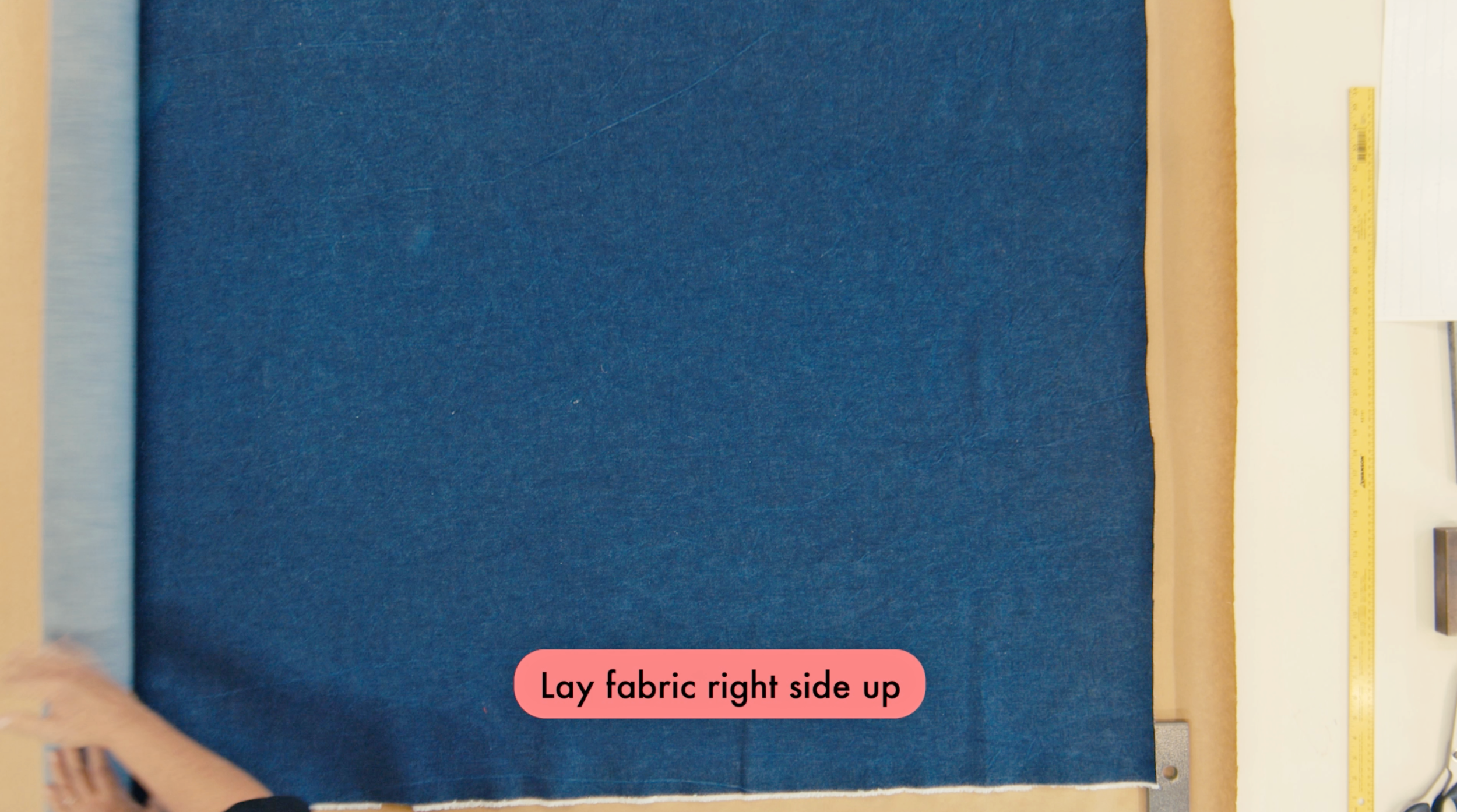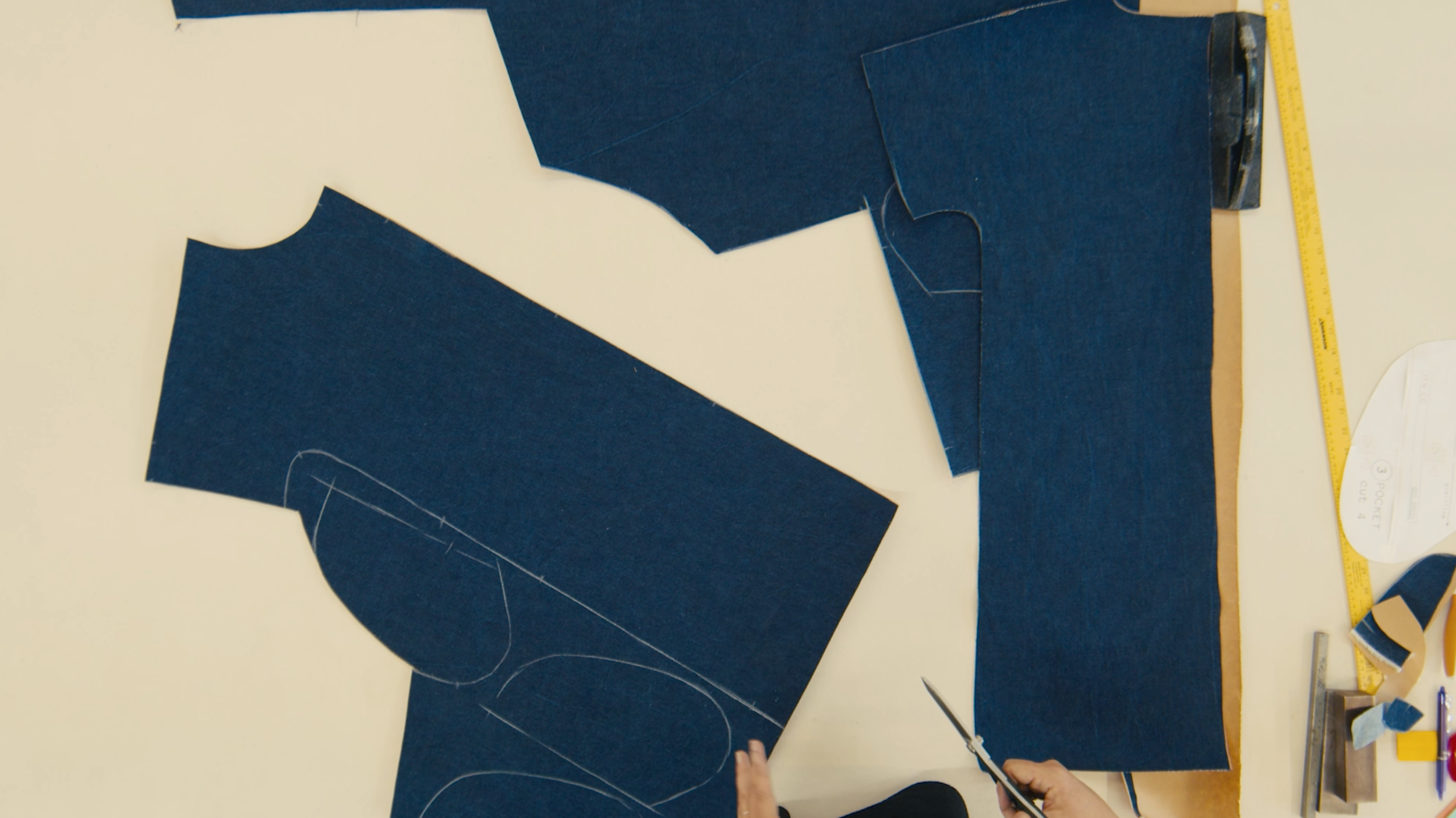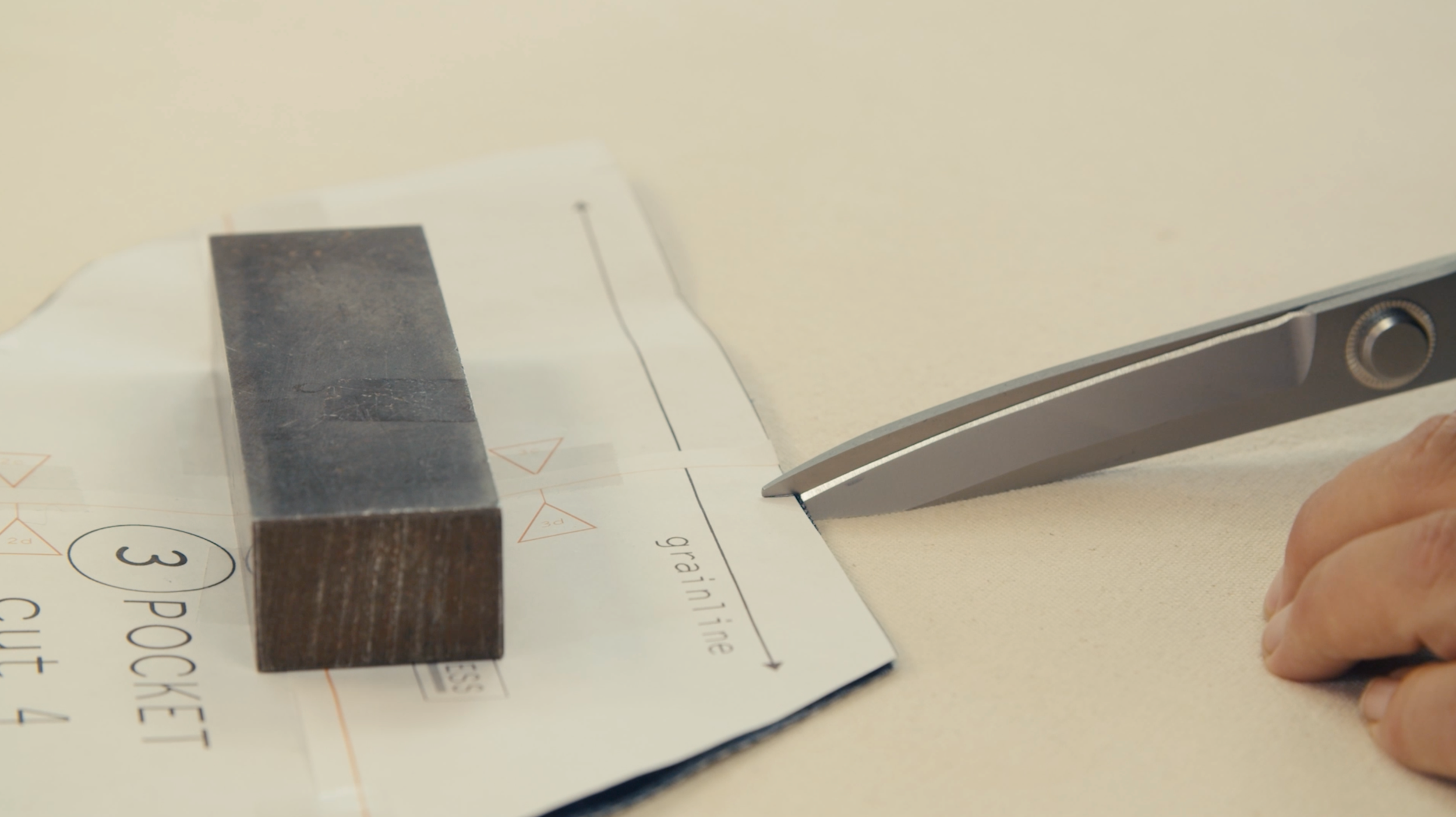A lot of home sewers may not add a layer of paper under their fabric, but we think it is a step that shouldn’t be skipped. A layer of paper under the fabric gives it some structure during cutting.
Lay out your fabric, on top of the paper layer, right side up. Some home sewers opt to fold their fabric when they’re cutting more than one of the same pattern piece. Instead, we suggest cutting one layer at a time.







